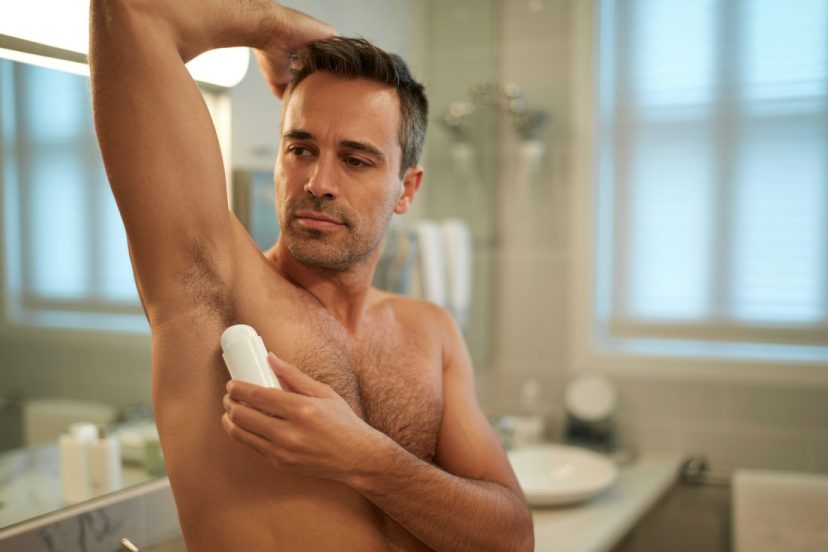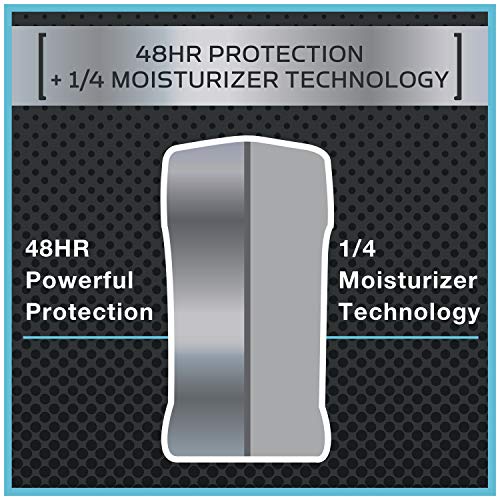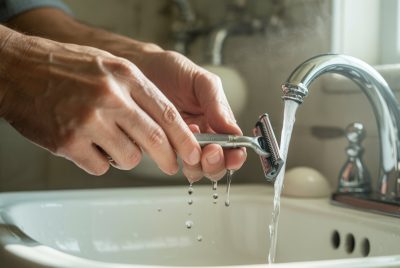Best Deodorants for Men 2025
Post Disclaimer
*We may earn a commission for purchases made using our links. Please see our disclosure to learn more.
The right deodorant can make or break your day. Whether you’re heading into an important meeting, hitting the gym for an intense workout, or simply going about your daily routine, confidence starts with knowing you’re protected against sweat and odor. Yet countless men struggle with deodorants that fail when they need them most—leaving behind white marks on clothing, causing skin irritation, or simply not delivering the all-day protection they promise.
The challenge isn’t just about controlling body odor. It’s about finding a formula that works with your unique body chemistry, matches your lifestyle demands, and aligns with your personal preferences—whether that means maximum sweat protection, natural ingredients, or a specific scent profile. Some men need clinical-strength antiperspirants for demanding work environments, while others prefer aluminum-free alternatives that work with their body’s natural processes.
This comprehensive guide breaks down everything you need to know about choosing the best deodorant for men, from understanding the difference between antiperspirants and deodorants to navigating common challenges like skin sensitivity and product failures. You’ll discover how to match your deodorant to your lifestyle, avoid common pitfalls, and finally achieve the reliable, comfortable protection that lasts from morning until night.
Key Takeaways
- Protection varies by formula: Antiperspirants block sweat glands while deodorants neutralize odor-causing bacteria
- Ingredients matter: Aluminum-based compounds offer maximum sweat protection, while natural alternatives use plant-based ingredients
- Skin sensitivity is common: Many men experience irritation from certain ingredients, making gentle formulas essential
- Application timing affects results: Applying deodorant at night allows active ingredients to work more effectively
- One size doesn’t fit all: Activity level, body chemistry, and personal preferences determine the ideal deodorant choice
Best Deodorants for Men Available on Amazon
Dove Men+Care Clean Comfort Deodorant Stick
Stay fresh and confident with Dove Men+Care Clean Comfort Deodorant Stick, one of the best deodorants for men who want effective odor protection without aluminum. Designed with ¼ moisturizing cream, it keeps your underarms smooth and comfortable while preventing irritation. The clean, masculine scent combines notes of bergamot, lavender, and sandalwood—giving you long-lasting freshness that feels light yet invigorating. This alcohol-free and aluminum-free formula provides 72-hour odor protection and all-day confidence for active men who care about both performance and skin health.
For men looking for a gentle yet powerful deodorant, the Dove Men+Care Clean Comfort Deodorant Stick is a top choice among the best deodorants for men. This aluminum-free formula provides 72 hours of odor protection without clogging pores or irritating the skin. Enriched with ¼ moisturizing cream, it helps maintain healthy underarms while keeping you fresh and dry throughout the day.
- Aluminum-Free Protection: Fights odor naturally while remaining gentle on skin.
- Moisturizing Formula: Contains ¼ moisturizing cream for smooth, irritation-free underarms.
- Fresh Scent: Clean blend of bergamot, lavender, and sandalwood for all-day freshness.
- No Antiperspirant: Doesn’t control sweat since it’s aluminum-free.
- Scent Duration: Fragrance may fade faster during intense workouts.
- Texture: Can feel slightly creamy when applied in humid weather.
Native Coconut & Vanilla Deodorant
Experience lasting freshness with Native Coconut & Vanilla Deodorant, one of the best deodorants for men and women who prefer a clean, natural formula. Made with baking soda, coconut oil, and shea butter, this aluminum-free deodorant offers 72-hour odor protection without harsh chemicals. Its tropical scent of coconut, pineapple, and vanilla delivers a light, refreshing aroma that keeps you confident all day. Dermatologist-tested and cruelty-free, Native Deodorant glides on smoothly with no sticky residue or white marks—just clean, effective protection powered by nature.
When it comes to natural options among the best deodorants for men, Native Coconut & Vanilla Deodorant is a top-rated favorite for its clean ingredients and lasting performance. Crafted without aluminum, parabens, or phthalates, this formula relies on baking soda and plant-based oils to neutralize odor naturally—keeping you fresh for up to 72 hours. Its smooth, residue-free texture ensures an easy glide and clean finish that doesn’t stain clothes.
- Naturally Derived Formula: Made with baking soda, coconut oil, and shea butter for safe, effective odor control.
- Long-Lasting Freshness: Provides up to 72 hours of odor protection without aluminum or parabens.
- Smooth Application: Glides on easily with no white residue or sticky feeling.
- Scent Sensitivity: The coconut-vanilla fragrance may be too sweet for some users.
- Baking Soda Irritation: May cause mild irritation for those with sensitive skin.
- Price Point: Slightly higher cost compared to traditional deodorants.
Degree Men Adventure Antiperspirant Deodorant
Stay confident and unstoppable with Degree Men Adventure Antiperspirant Deodorant, one of the best deodorants for men who lead active, on-the-go lifestyles. Formulated with Motionsense technology, it releases bursts of refreshing fragrance whenever you move—keeping you fresh through workouts, workdays, and adventures. This antiperspirant provides up to 72 hours of sweat and odor protection, ensuring all-day dryness and comfort. Its woody, masculine scent brings an energizing touch, perfect for men who want lasting freshness and strength in every stride.
When looking for performance-driven picks among the best deodorants for men, Degree Men Adventure Antiperspirant Deodorant consistently stands out. Engineered with Motionsense technology, this innovative formula reacts to your body’s movement—releasing fresh bursts of fragrance when you need it most. Whether you’re hitting the gym, tackling a busy day, or exploring the outdoors, it provides 72 hours of powerful sweat and odor protection to keep you feeling dry and confident.
- Long-Lasting Defense: Offers up to 72 hours of sweat and odor protection.
- Smart Fragrance Release: Motionsense technology activates with movement for nonstop freshness.
- Refreshing Scent: Woodsy aroma keeps you smelling clean and confident all day.
- Not Aluminum-Free: Contains aluminum for sweat control, which some users avoid.
- Residue Possibility: May leave light marks on darker clothing if applied heavily.
- Scent Preference: Woodsy fragrance may be too strong for those who prefer mild scents.
Degree Men Adventure Antiperspirant Deodorant
Stay fresh and confident with Old Spice High Endurance Antiperspirant Deodorant, one of the best deodorants for men who demand strong, all-day protection. Designed for active lifestyles, this deodorant delivers advanced 24/7 sweat and odor defense, helping you stay dry and fresh no matter how intense your day gets. Its Pure Sport scent offers a crisp, clean, and energetic fragrance that lasts—keeping you smelling great from morning workouts to late-night hangouts. Paraben-free and easy to apply, it’s the classic go-to choice for men who want power and freshness in one stick.
Among the best deodorants for men, Old Spice High Endurance Antiperspirant Deodorant remains a timeless favorite for its strong, reliable performance. Formulated for men who live boldly, it provides advanced sweat and odor protection to keep you feeling fresh and dry 24/7. The Pure Sport scent blends invigorating, sporty notes with a clean, masculine finish—ideal for daily wear or after tough workouts.
- Powerful Protection: 24/7 sweat and odor defense for long-lasting freshness.
- Crisp Masculine Scent: Pure Sport fragrance delivers clean, energizing confidence.
- Trusted Brand: Reliable performance from Old Spice’s proven High Endurance line.
- Contains Aluminum: Not suitable for men seeking aluminum-free options.
- Scent Strength: Fragrance may be too bold for sensitive users.
- Limited Duration: Offers 24-hour protection—shorter than newer 72-hour formulas.
Understanding the Deodorant Dilemma
The relationship between men and their deodorant often resembles a complicated dance. Many grab the same product their father used, never questioning whether it truly serves their needs. Others cycle through dozens of options, searching for that elusive combination of effective protection, pleasant scent, and skin compatibility.
The frustration builds with each disappointing purchase. Yellow armpit stains ruin favorite shirts. Mid-afternoon self-consciousness creeps in during important moments. Gym sessions leave clothing unbearably pungent despite morning application. The promise on the package rarely matches the reality of a full, active day.
What many don’t realize is that finding the best deodorant isn’t about discovering one perfect product—it’s about understanding your body’s unique needs and matching them to the right formula. Sweat glands, skin pH, activity levels, and even diet all influence how deodorants perform. The product that works miracles for a desk-bound professional might fail miserably for someone who spends hours in physical labor.
The Science Behind Sweat and Odor
Before diving into product recommendations, understanding what deodorants actually do transforms the shopping experience from guesswork into informed decision-making.
Sweat itself is odorless. The approximately 2-4 million sweat glands covering the human body produce a mixture of water, salt, and trace minerals. However, when this moisture meets bacteria naturally living on the skin, those microorganisms feast on the sweat and produce the distinctive unpleasant odor we associate with body odor.
Men typically produce more sweat than women due to higher testosterone levels and more active sweat glands. This biological reality means men’s deodorants need to work harder to provide adequate protection. The underarm area, with its warm, moist environment, creates the perfect breeding ground for odor-causing bacteria.
Antiperspirants work by temporarily blocking sweat glands using aluminum-based compounds. These ingredients create a gel-like plug in the sweat ducts, reducing the amount of moisture that reaches the skin surface. Less sweat means less food for bacteria, which translates to less odor and drier underarms.
Deodorants take a different approach by neutralizing odor-causing bacteria without stopping sweat production. They use antimicrobial ingredients, fragrances, and often alcohol to create an environment where bacteria struggle to thrive. Natural deodorants typically rely on baking soda, arrowroot powder, or similar ingredients to absorb moisture while essential oils provide antibacterial properties.
The Journey Through Different Formulas
Traditional Antiperspirants: Maximum Protection
For years, aluminum-based antiperspirants represented the gold standard in sweat and odor protection. These clinical-strength formulas deliver what they promise: significantly reduced wetness and all-day confidence. Men working in high-stress professions, those with naturally active sweat glands, or anyone facing important occasions where protection cannot fail often find these formulas indispensable.
The technology has evolved considerably. Modern antiperspirants incorporate moisturizing agents to combat the dryness that concerned earlier generations of users. Many now glide on clear to prevent the white residue that once stained dark clothing. Fragrance technology has become more sophisticated, offering scents that range from barely-there clean to boldly masculine.
However, these powerful formulas come with considerations. Some men experience skin irritation, particularly those with sensitive skin or eczema. The aluminum compounds, while safe according to extensive research, remain a concern for individuals preferring to minimize their exposure to certain chemicals. Yellow staining on white clothing, caused by a reaction between aluminum and proteins in sweat, frustrates many users despite manufacturers’ efforts to address this issue.
Natural Deodorants: The Gentle Alternative
The natural deodorant movement has transformed from niche market to mainstream option. These aluminum-free, paraben-free formulas appeal to men seeking cleaner ingredient lists without sacrificing effectiveness. The best natural deodorants deliver impressive odor protection using plant-based ingredients that work with the body’s natural processes rather than against them.
Baking soda serves as the workhorse in many natural formulas, neutralizing odor while absorbing moisture. Arrowroot powder and cornstarch add additional moisture-wicking properties. Coconut oil provides antimicrobial benefits while conditioning skin. Shea butter ensures smooth application. Essential oils contribute both fragrance and bacteria-fighting capabilities.
The transition to natural deodorant requires patience and realistic expectations. Bodies accustomed to antiperspirants need time to adjust—typically two to four weeks—as sweat glands return to normal function and skin pH rebalances. During this adjustment period, increased sweating and odor are common and temporary. Many who persevere through this phase find natural deodorants ultimately provide excellent protection once their body adapts.
Not all natural deodorants are created equal. Some rely heavily on baking soda, which can irritate sensitive skin. Others use magnesium or other gentle alternatives. Trial and error often proves necessary to find the formula that works for individual body chemistry.
Spray Deodorants: Quick and Convenient
Aerosol and non-aerosol spray deodorants offer speed and convenience that appeals to men always on the go. A quick spray takes seconds, dries almost instantly, and provides decent protection for moderate activity levels. The no-touch application feels more hygienic to some users, and the lightweight feel appeals to those who dislike the sensation of stick or roll-on formulas.
Modern sprays have addressed many concerns that plagued earlier versions. Aerosol propellants have become more environmentally friendly. Formulas dry more quickly and leave less white residue. Scents have become more refined and less overpowering than the body sprays of decades past.
The tradeoff comes in protection level and longevity. Most sprays don’t offer the same sweat-blocking power as stick antiperspirants. The fine mist application, while convenient, may not provide as even or thorough coverage. For men with light to moderate sweating, sprays work wonderfully. Those facing more demanding physical conditions often find them inadequate.
Overcoming Common Challenges
The Yellow Stain Problem
Few grooming issues frustrate men more than discovering yellow armpit stains on favorite white shirts. This discoloration results from a chemical reaction between aluminum compounds in antiperspirants and proteins in sweat. The stains set quickly and prove remarkably difficult to remove with standard laundering.
Several strategies help prevent these stubborn stains. Allowing antiperspirant to dry completely before dressing gives aluminum compounds time to absorb into skin rather than transfer to fabric. Applying at night lets the formula activate while you sleep, reducing the amount needed in the morning. Some men find that switching to aluminum-free deodorants eliminates the problem entirely, though this requires accepting that some wetness may occur.
For existing stains, pre-treating with a paste of baking soda and water or oxygen-based bleach before washing can lift the discoloration. Prevention, however, remains far easier than removal.
Skin Irritation and Sensitivity
Red, itchy, burning underarms transform the simple act of applying deodorant into an uncomfortable experience. Sensitive skin reacts to various ingredients commonly found in deodorants: alcohol, fragrances, aluminum compounds, propylene glycol, and even natural ingredients like baking soda.
Identifying the specific trigger requires systematic elimination. Many dermatologists recommend starting with a fragrance-free, aluminum-free formula containing minimal ingredients. If irritation persists, the culprit might be baking soda, which has a high pH that can disrupt skin’s natural acidity. Some natural deodorants now offer baking soda-free formulas using magnesium, zinc, or other gentle alternatives.
Allowing freshly shaved underarms to heal before applying any deodorant prevents additional irritation. Shaving creates microscopic cuts and abrasions that allow irritating ingredients to penetrate deeper into skin. Waiting at least 30 minutes after shaving, or shaving at night and applying deodorant in the morning, reduces this risk considerably.
The Midday Fade
Starting the day fresh only to become self-conscious about odor by afternoon defeats the purpose of using deodorant at all. This common complaint has multiple potential causes and solutions.
Application timing makes a surprising difference. Applying antiperspirant at night allows aluminum compounds to form more effective plugs in sweat ducts while you sleep and sweat less. Morning application can then be lighter, focusing on scent rather than protection. The nighttime application provides up to 24 hours of sweat reduction.
Proper application technique also matters. Many men apply deodorant too quickly, swiping once or twice and calling it done. Thorough coverage requires several swipes to ensure the entire underarm area receives adequate product. The deodorant should be visibly present on skin without being clumpy or excessive.
Body chemistry and diet influence odor production. Certain foods—particularly garlic, onions, curry, and alcohol—can make sweat smell more pungent. Staying hydrated helps dilute sweat and reduce odor intensity. Regular exfoliation of underarm skin removes dead skin cells and built-up product that can harbor bacteria.
Matching Deodorant to Your Lifestyle
The Office Professional
Spending eight to ten hours in close quarters with colleagues demands reliable, long-lasting protection that won’t fail during high-pressure meetings or afternoon presentations. The dress code requires clothes that stay free from white marks and yellow stains. Scent should be present but subtle, noticeable only in close proximity.
Traditional solid stick antiperspirants excel in this environment. Look for formulas explicitly labeled “clear” or “invisible” to prevent residue on dark business attire. Clinical-strength options provide extra insurance during particularly stressful workdays. Reapplication typically isn’t necessary if quality products are applied properly.
Scent selection matters in professional settings. Heavily fragranced products can overwhelm in air-conditioned spaces or trigger sensitivities in coworkers. Clean, fresh scents or barely-scented options maintain professionalism while providing confidence.
The Active Athlete
Intense physical activity creates the ultimate challenge for deodorants. Heart rates soar, body temperature rises, and sweat pours. Post-workout, the problem intensifies as cooling sweat creates ideal conditions for bacterial growth and odor.
Sport-specific formulas designed for high-performance activities offer the best protection. These typically contain higher concentrations of active ingredients and incorporate technology that activates with movement and moisture. Some athletes prefer to apply antiperspirant the night before early morning workouts, allowing maximum time for the product to work.
Natural deodorants can work for athletes, but realistic expectations matter. They won’t stop sweat—nothing natural will—but quality formulas effectively control odor even during intense exercise. Reapplication after showering becomes part of the post-workout routine.
Clothing choice impacts results too. Moisture-wicking, antimicrobial workout fabrics help manage sweat and reduce odor regardless of deodorant choice. Cotton, while comfortable, retains moisture and odor more stubbornly.
The Natural Living Advocate
For men prioritizing clean ingredients and minimal environmental impact, natural deodorants align with broader lifestyle values. The commitment to avoiding aluminum, parabens, phthalates, and synthetic fragrances requires accepting different performance characteristics than conventional products provide.
Success with natural deodorants demands several adjustments. The transition period tests commitment as the body detoxifies from years of antiperspirant use. Reapplication during particularly active days becomes normal rather than exceptional. Finding the right formula for individual body chemistry often requires trying multiple brands and scent profiles.
Many natural deodorant users report that initial skepticism transforms into genuine satisfaction. Once the adjustment period passes, natural deodorants often provide excellent odor control. The absence of aluminum means no yellow staining, no pore-blocking, and a cleaner feeling many describe as allowing skin to “breathe.”
The Sensitive Skin Sufferer
Dealing with easily irritated skin transforms deodorant shopping from routine to challenging. Each new product carries the risk of redness, itching, burning, or rashes. The fear of reaction can lead to avoiding deodorant altogether or suffering through discomfort daily.
Hypoallergenic, fragrance-free formulas specifically designed for sensitive skin offer the safest starting point. These typically minimize potentially irritating ingredients while still providing adequate protection. Some natural deodorants formulated without baking soda work well for sensitive skin, using gentler ingredients like magnesium hydroxide or zinc oxide.
Patch testing new products before full application can prevent widespread reactions. Apply a small amount to the inner forearm, wait 24 hours, and check for any redness or itching before using on underarms. This simple step saves considerable discomfort.
Working with a dermatologist can identify specific ingredient sensitivities through allergy testing. Armed with this knowledge, reading labels becomes more productive, allowing you to avoid known triggers systematically.
The Evolution of Scent Preferences
Deodorant fragrance extends beyond mere odor coverage—it contributes to personal identity and how others perceive you. The scent landscape has expanded dramatically beyond the basic “sport” and “fresh” options that once dominated men’s grooming aisles.
- Clean and Fresh: These universally appealing scents suggest soap, water, and cleanliness. They work everywhere, offend no one, and layer well with cologne or remain subtle enough without it. Ideal for professional settings, these scents convey competence and approachability.
- Woody and Earthy: Cedar, sandalwood, sage, and similar notes project rugged masculinity and natural confidence. These sophisticated fragrances appeal to men who want their grooming products to reflect an outdoorsy, adventurous persona without being aggressively masculine.
- Citrus and Herbal: Bright, energetic scents like bergamot, lemon, mint, and eucalyptus provide invigorating freshness. They work particularly well in warm weather and active situations, offering a cooling sensation both physical and olfactory.
- Unscented: The growing popularity of unscented deodorants reflects men’s increasing use of cologne and a desire to avoid fragrance conflicts. These products still contain odor-fighting ingredients but skip added perfumes, allowing personal fragrance choices to take center stage.
The Environmental and Health Considerations
As awareness grows around ingredient safety and environmental impact, men increasingly question what they apply to their skin daily. While research consistently shows that aluminum in antiperspirants poses no health risk, the personal choice to avoid certain ingredients remains valid and increasingly easy to accommodate.
The deodorant industry has responded to consumer concerns with greater transparency. Ingredient lists now often explain what each component does and why it’s included. Terms like “clean beauty” and “free-from” formulations have moved from niche to mainstream, making it simple to find products aligned with personal values.
Packaging represents another consideration. Traditional plastic deodorant tubes and aerosol cans contribute to landfill waste and ocean pollution. Some brands now offer refillable containers, cardboard packaging, or completely plastic-free options. These sustainable alternatives typically cost more initially but reduce environmental impact over time.
The question of “natural” versus “conventional” ultimately comes down to personal priorities, body chemistry, and lifestyle demands. Neither choice is inherently superior—they serve different needs and values. What matters most is finding a deodorant that provides adequate protection while aligning with individual health philosophies and environmental concerns.
The Art of Proper Application
Even the best deodorant fails if applied incorrectly. Proper technique maximizes effectiveness and extends protection throughout the day.
- Timing Matters: Apply antiperspirant at night for maximum sweat reduction. The aluminum compounds need time to form plugs in sweat ducts, which happens most effectively when sweat glands are least active—during sleep. Morning application can supplement if desired but nighttime application provides the foundation.
- Clean Canvas: Apply only to clean, dry skin. Bacteria, sweat, and previous product layers prevent new deodorant from working effectively. Post-shower application is ideal, but ensure underarms are completely dry first. Moisture interferes with product adherence and effectiveness.
- Thorough Coverage: Multiple swipes ensure complete coverage of the entire underarm area. Many men under-apply, leaving gaps where sweat and odor can develop. The deodorant should be visibly present without being cakey or excessive.
- Wait Before Dressing: Allow the product 30-60 seconds to dry before putting on clothing. This prevents transfer to fabric, reduces white marks, and allows ingredients to absorb properly into skin.
- Store Properly: Keep deodorant at room temperature. Extreme heat can alter the formula’s consistency and effectiveness. Extreme cold can cause some formulas to become too hard to apply smoothly.
Beyond the Basics: Advanced Strategies
For men who struggle to find adequate protection with standard approaches, several advanced strategies can help.
- Prescription Strength: Dermatologists can prescribe clinical-strength antiperspirants containing higher concentrations of aluminum chloride for hyperhidrosis (excessive sweating). These powerful formulas provide superior sweat reduction but require careful use to avoid irritation.
- Layering Protection: Some men find success combining a gentle, aluminum-free deodorant with a sweat-absorbing powder or cream. This multi-pronged approach addresses both odor and moisture without relying solely on antiperspirants.
- Medical Treatments: For severe cases of excessive sweating unresponsive to over-the-counter options, treatments like Botox injections, microwave therapy, or even surgery offer solutions. These represent significant interventions but can dramatically improve quality of life for those truly struggling.
- Dietary Adjustments: Certain foods exacerbate body odor. Reducing intake of pungent foods, alcohol, and heavily processed items while increasing water consumption can reduce odor intensity, making any deodorant more effective.
The Future of Men’s Deodorant
Innovation continues transforming the deodorant landscape. Probiotic formulas containing beneficial bacteria that crowd out odor-causing microbes represent one emerging trend. These “living” deodorants work with the skin’s microbiome rather than against it, potentially offering more sustainable, long-term odor control.
Smart formulas that respond to body chemistry or environmental conditions are in development. Imagine deodorants that release more active ingredients as pH changes or temperature rises, providing dynamic protection that intensifies exactly when needed.
Sustainability will continue driving innovation in both formulas and packaging. Water-free products, concentrated formulas, and completely biodegradable packaging will likely become standard rather than exceptional as environmental concerns influence purchasing decisions.
Personalization may become more sophisticated, with companies offering custom formulas based on detailed questionnaires about body chemistry, lifestyle, and preferences. Some brands already provide this service, and as the technology becomes more accessible, truly personalized deodorant may become the norm.
Making Peace with Sweat
Perhaps the most important realization in the journey to find the best deodorant is this: sweating is normal, healthy, and necessary. The human body uses sweat to regulate temperature, eliminate toxins, and maintain homeostasis. The goal isn’t to eliminate sweat entirely—that would be neither possible nor desirable—but to manage it in a way that maintains confidence and comfort.
This perspective shift reduces anxiety around the inevitable moments when deodorant isn’t perfect. A bit of moisture during intense exercise, stress, or heat isn’t failure—it’s biology. Quality deodorants manage odor even when some wetness occurs, and that’s often sufficient.
Understanding this frees men to focus on what matters: finding a product that provides adequate protection for their lifestyle, respects their health priorities, and allows them to move through the day with confidence. Whether that’s a clinical-strength antiperspirant, a natural deodorant, or something in between matters far less than how it makes you feel.
Taking the Next Step
The quest for the best deodorant isn’t about discovering one perfect product—it’s about understanding your unique needs and finding a solution that works for your body, lifestyle, and values. Whether you choose traditional antiperspirants for maximum protection, natural alternatives for cleaner ingredients, or something in between, the right choice is the one that lets you face each day with confidence.
Start by honestly assessing your needs. How active is your lifestyle? How sensitive is your skin? What matters most—maximum sweat protection, natural ingredients, or environmental sustainability? These answers guide you toward the right category of products.
Try products methodically rather than randomly. Give each new deodorant at least a week of consistent use before judging its effectiveness. Keep notes about performance throughout the day and any skin reactions. This systematic approach saves money and frustration.
Remember that needs change with seasons, age, stress levels, and life circumstances. The deodorant that worked perfectly in your twenties might not suffice in your forties. What protects you during winter might fail during summer heat. Remaining flexible and willing to adjust keeps you one step ahead of discomfort.
Most importantly, don’t settle for a product that doesn’t serve you well. The right deodorant exists—finding it simply requires patience, experimentation, and realistic expectations. When you discover that perfect match, daily confidence becomes effortless, allowing you to focus on what truly matters rather than worrying about sweat and odor.
The journey to finding your ideal deodorant might involve some trial and error, but the payoff—all-day confidence and comfort—makes the effort worthwhile. Start today with one small change, and move forward with the knowledge that effective protection is within reach.
Frequently Asked Questions
Q: Should I use deodorant or antiperspirant?
A: The choice depends on your needs. Antiperspirants contain aluminum compounds that temporarily block sweat glands, reducing both moisture and odor. Deodorants neutralize odor-causing bacteria without stopping sweat. If excessive wetness bothers you or you need maximum protection for professional settings, choose antiperspirant. If you’re comfortable with some natural moisture and prefer to avoid aluminum, opt for deodorant. Many men use antiperspirant during work days and deodorant on weekends or during workouts.
Q: How long does it take to adjust to natural deodorant?
A: The transition period typically lasts two to four weeks. During this time, your body adjusts to no longer having sweat glands blocked by aluminum compounds. You may experience increased sweating and odor as sweat glands return to normal function and skin pH rebalances. This temporary phase is normal and doesn’t mean natural deodorant won’t work for you. Most men who push through the adjustment period report excellent results afterward. Stay hydrated, maintain good hygiene, and be patient with the process.
Q: Why does my deodorant stop working after a while?
A: This phenomenon, sometimes called “deodorant immunity,” doesn’t actually involve your body becoming resistant to the product. Instead, several factors can make deodorant seem less effective over time: product buildup on skin creating a barrier, changes in body chemistry due to diet or stress, seasonal temperature changes, or simply increased awareness of normal body odor. Try exfoliating underarms weekly to remove buildup, rotating between two different deodorants, or taking a break from your current product for a week before returning to it.
Q: Can I use women’s deodorant as a man?
A: Absolutely. The main differences between men’s and women’s deodorants are fragrance and marketing. The active ingredients and formulations are often identical. If you prefer a particular women’s deodorant scent or find a formula that works better for your skin, use it without concern. The designation “for men” or “for women” is primarily about scent profiles and packaging rather than functional differences. Choose based on what works for your body and what scents you enjoy.
Q: How can I remove yellow armpit stains from shirts?
A: Yellow stains result from a reaction between aluminum in antiperspirant and proteins in sweat. To remove existing stains, create a paste using three parts baking soda to one part water, apply directly to the stain, let it sit for an hour, then wash in hot water. Alternatively, soak the stained area in a mixture of equal parts hydrogen peroxide and water for 30 minutes before washing. For stubborn stains, oxygen-based bleach products work effectively. Prevention is easier: allow antiperspirant to dry completely before dressing, apply at night instead of morning, or switch to aluminum-free deodorant.
















